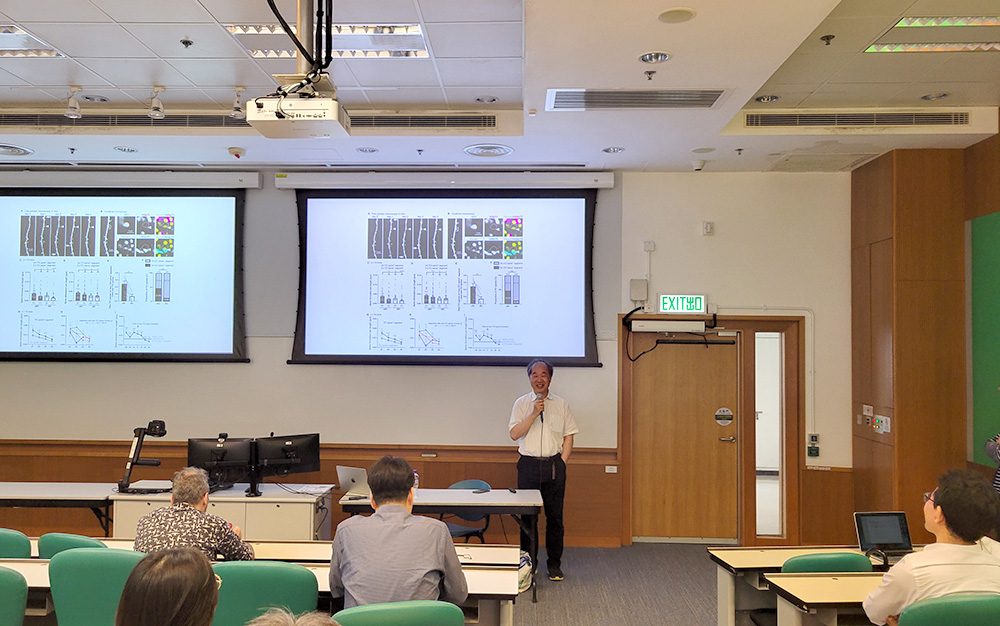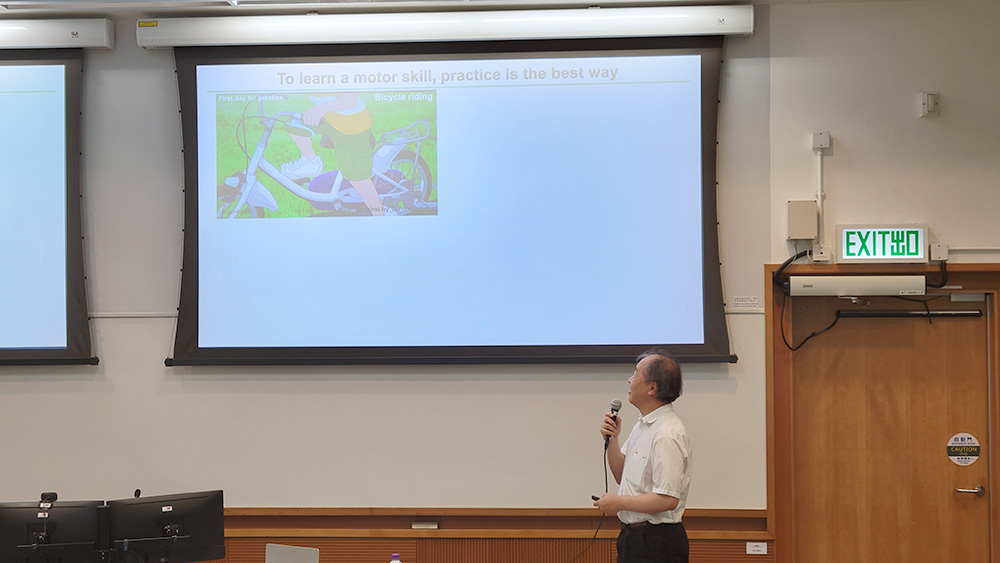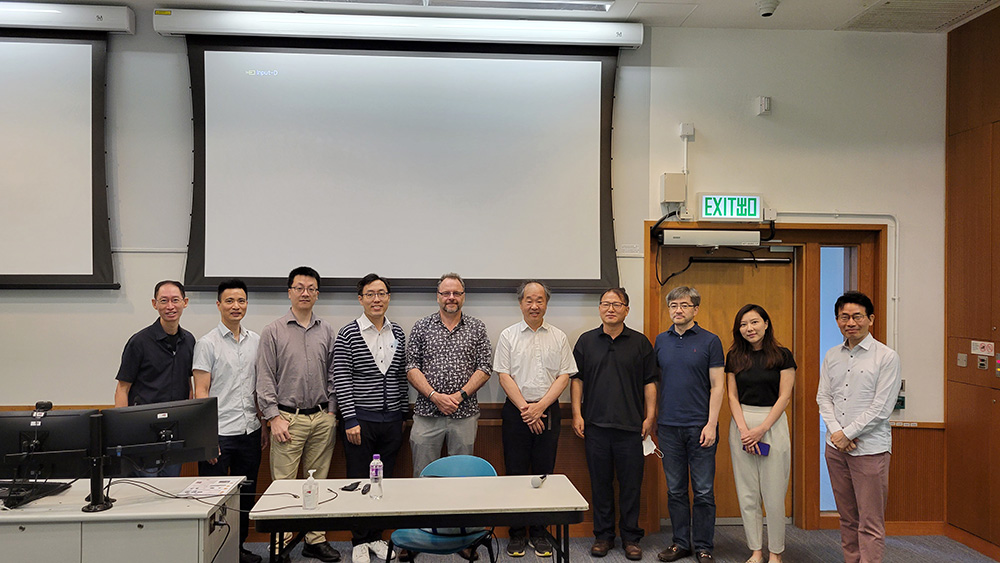


In the seminar organised by the Department of Neuroscience of City University of Hong Kong, Professor Yoshiyuki Kubota, Associate Professor, Section of Electron Microscopy of National Institute for Physiological Sciences (NIPS), delivered a seminar entitled “Cortical Spine Dynamics During a Single Seed Grasp Motor Learning” on 6 June 2023.
He reviewed their recent efforts on two types of synaptic dynamics that are important for “motor learning” and “motor memory”. Their study demonstrates new dendritic spines are generated in pyramidal cells in layer 5 of the primary motor cortex. It indicates that neural circuit rearrangement has occurred in the cortex after learning. The study also shows that top-down information from the higher-order motor cortex to the primary motor cortex is important for "motor learning", and that the acquired "motor memories" are then taken over and newly stored in synaptic inputs from the thalamus.
Professor Kubota developed a powerful approach that combines two-photon imaging and volume electron microscopy (EM) to analyze the synaptic connections between neurons and architecture of neural microcircuits in the brain. They can trace the spine dynamics during and after motor learning. His lab further improved the EM technique to investigate the wiring of microcircuit in a cortical column by 3D reconstruction of neural elements with artificial intelligence (AI)-assisted automated segmentation. They also developed a highly efficient method for large volume EM imaging which can cover the entire cortical layers of rodent or monkey cortex.
His findings reinforce the idea that a thalamo-cortical network plays an essential role in motor memory with changes of new spine dynamics and thus provides new ideas for our study of learning and memory. The volume EM technique can also help us to observe the finer details of synaptic structures.